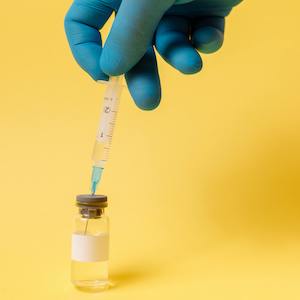Original Articles
Vol. 69 No. 1 (2017)
Prevalence and incidence of osteoporotic fractures in patients on long-term glucocorticoid treatment for rheumatic diseases: the Glucocorticoid Induced OsTeoporosis TOol (GIOTTO) study

Publisher's note
All claims expressed in this article are solely those of the authors and do not necessarily represent those of their affiliated organizations, or those of the publisher, the editors and the reviewers. Any product that may be evaluated in this article or claim that may be made by its manufacturer is not guaranteed or endorsed by the publisher.
All claims expressed in this article are solely those of the authors and do not necessarily represent those of their affiliated organizations, or those of the publisher, the editors and the reviewers. Any product that may be evaluated in this article or claim that may be made by its manufacturer is not guaranteed or endorsed by the publisher.
Received: 6 September 2016
Accepted: 5 April 2017
Accepted: 5 April 2017
4755
Views
3191
Downloads
Authors
Osteoporosis and Metabolic Skeletal Diseases Study Group of Italian Society of Rheumatology (SIR), Italy.
Osteoporosis and Metabolic Skeletal Diseases Study Group of Italian Society of Rheumatology (SIR), Italy.
Osteoporosis and Metabolic Skeletal Diseases Study Group of Italian Society of Rheumatology (SIR), Italy.
Osteoporosis and Metabolic Skeletal Diseases Study Group of Italian Society of Rheumatology (SIR), Italy.
Osteoporosis and Metabolic Skeletal Diseases Study Group of Italian Society of Rheumatology (SIR), Italy.
Osteoporosis and Metabolic Skeletal Diseases Study Group of Italian Society of Rheumatology (SIR), Italy.
Osteoporosis and Metabolic Skeletal Diseases Study Group of Italian Society of Rheumatology (SIR), Italy.
Osteoporosis and Metabolic Skeletal Diseases Study Group of Italian Society of Rheumatology (SIR), Italy.
Osteoporosis and Metabolic Skeletal Diseases Study Group of Italian Society of Rheumatology (SIR), Italy.
Osteoporosis and Metabolic Skeletal Diseases Study Group of Italian Society of Rheumatology (SIR), Italy.
Osteoporosis and Metabolic Skeletal Diseases Study Group of Italian Society of Rheumatology (SIR), Italy.
Osteoporosis and Metabolic Skeletal Diseases Study Group of Italian Society of Rheumatology (SIR), Italy.
Osteoporosis and Metabolic Skeletal Diseases Study Group of Italian Society of Rheumatology (SIR), Italy.
Osteoporosis and Metabolic Skeletal Diseases Study Group of Italian Society of Rheumatology (SIR), Italy.
Osteoporosis and Metabolic Skeletal Diseases Study Group of Italian Society of Rheumatology (SIR), Italy.
Osteoporosis and Metabolic Skeletal Diseases Study Group of Italian Society of Rheumatology (SIR), Italy.
Osteoporosis and Metabolic Skeletal Diseases Study Group of Italian Society of Rheumatology (SIR), Italy.
Osteoporosis and Metabolic Skeletal Diseases Study Group of Italian Society of Rheumatology (SIR), Italy.
Osteoporosis and Metabolic Skeletal Diseases Study Group of Italian Society of Rheumatology (SIR), Italy.
Osteoporosis and Metabolic Skeletal Diseases Study Group of Italian Society of Rheumatology (SIR), Italy.
Osteoporosis and Metabolic Skeletal Diseases Study Group of Italian Society of Rheumatology (SIR), Italy.
Osteoporosis and Metabolic Skeletal Diseases Study Group of Italian Society of Rheumatology (SIR), Italy.
Osteoporosis and Metabolic Skeletal Diseases Study Group of Italian Society of Rheumatology (SIR), Italy.
Osteoporosis and Metabolic Skeletal Diseases Study Group of Italian Society of Rheumatology (SIR), Italy.
How to Cite
1.
Prevalence and incidence of osteoporotic fractures in patients on long-term glucocorticoid treatment for rheumatic diseases: the Glucocorticoid Induced OsTeoporosis TOol (GIOTTO) study. Reumatismo [Internet]. 2017 May 22 [cited 2026 Jan. 5];69(1):30-9. Available from: https://www.reumatismo.org/reuma/article/view/922











